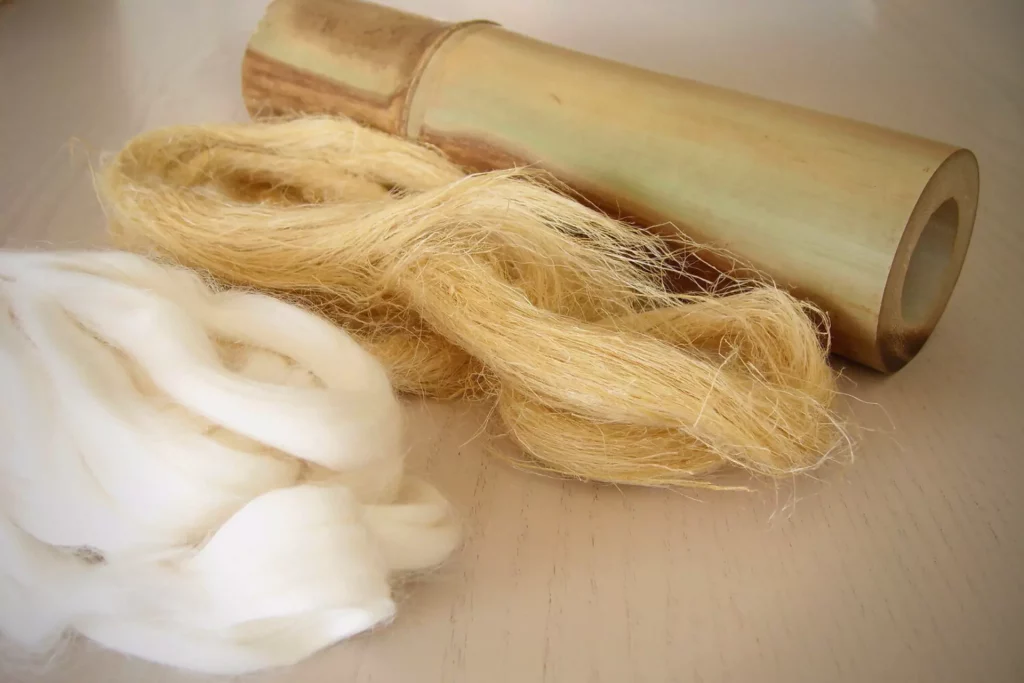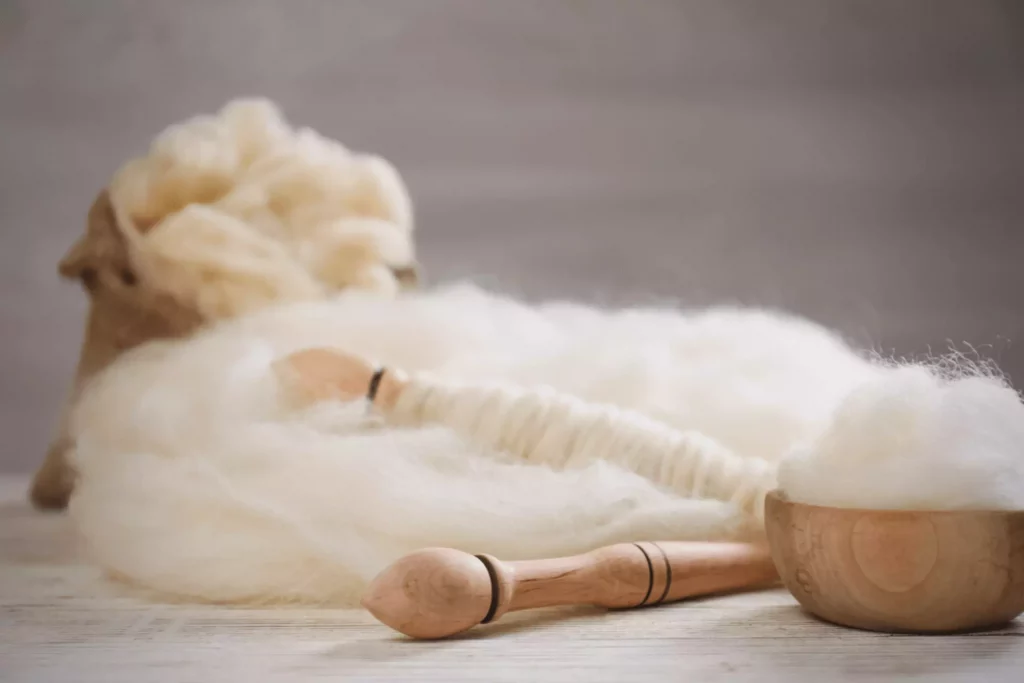Bamboo is a plant that has been used for clothes, flooring, and other things for a very long time. Compared to other fibers, such as wool, it has several advantages. Merino wool is a kind of sheep’s wool that is extremely popular due to its softness and the fact that it does not shed.
Yorkshire terriers are particularly fond of it since it does not shed. The two most typically used textiles for socks are merino wool and bamboo, both made from natural fibers. They are both good at delivering the necessary warmth. However, Merino wool performs somewhat better than Bamboo in this regard. This article will explain why.
Table of Contents
What Is the Process Through Which Bamboo Is Transformed Into Yarn?

Bamboo clothing is created from bamboo leaves and the core pith of the hard bamboo stem, which are removed using a steaming method and then manually crushed.
A mixture of chemical solvents is used for cooking the pulp, with sodium hydroxide and carbon disulfide being the primary ingredients. Both substances are well-known to be hazardous to human health. Using a device similar to a showerhead, this solution is forced into threaded tubes.
An acid bath is used to pull out the fibers, which causes them to become rigid, resulting in a viscose fiber suitable for spinning. After that, the yarn is commonly combined with different rayon fibers, spandex, and cotton to create a fabric that can be worn and washed.
What is the Process of Merino Wool?

Merino wool is produced using a unique manufacturing technique. Once the Merino fleece has been harvested and removed from the farm, it is scoured to remove any dirt or debris. After that, it is rinsed a second time to scrape down and smooth the minute scales on each fiber.
This step is necessary to prevent the wool fabric from shrinking when it is washed since if the scales are left on, they would grasp each other and cause the garment to shrink.
After that, the fibers are softly coated with a soft glue that stops them from joining further, and the wool is allowed to air dry. Through a “carding” procedure, the tangled fibers are untangled and combed into “wool top,” a continuous cluster of twist-less fibers.
A continuous and strong yarn is spun from the top by pulling it down into a fine roving and applying a twist, resulting in the fibers being bound together into a continuous and strong yarn.
Unlike wool textile manufacturing, which involves spinning raw fibers into yarn and weaving them together, bamboo textile manufacturing is a chemical process that produces some highly harmful byproducts. The finished result isn’t made of bamboo at all.
Key Properties:
Bamboo vs. merino wool is two textiles that have generated much debate over their primary qualities or benefits. There is no difference between the two fabrics.
Burn Test:
Clothes made of bamboo burn fast, like that of cotton. It is normal for merino wool clothes to be flammable and will not burn even after extinguishing the flame. Merino wool’s non-melting and non-dripping characteristics are crucial for expert operators.
Warm When Wet:
If the clothing has a significant percentage of rayon, it will take longer to dry and function similarly to a cotton-based garment. Cotton dries at a chilly temperature because it sucks heat from your body to complete the drying process.
When merino wool gets wet, on the other hand, it retains its insulation properties. When it’s wet, merino wool is well-known for keeping you warm.
Odor Management:
As a result of bamboo processing into rayon, there is no trace of the natural plant remaining. There is no proof that rayon derived from processed bamboo is likewise antibacterial, even though the bamboo plant can inhibit the growth of germs.
There are a variety of studies available, and based on the data we’ve read, the longest period somebody appears to be willing to wear a viscose/rayon t-shirt is three days. This is preferable to cotton but falls well short of merino wool, which we know has been worn in t-shorts for weeks.
Merino wool has naturally occurring anti-bacterial properties. Because bacteria do not thrive on the merino wool material, it will not smell no matter how frequently you use it.
We cannot guarantee that you might not smell, but we can ensure that our items will not. In another piece, we’ll go over the benefits of merino and what makes it so unique.
Bamboo vs Merino Wool: Which One to Choose?

It is a natural fiber combination that is suitable for everyone to wear. Base layers are essential for dressing for the snow, and men’s ski thermals will keep you comfortable, toasty, and breathable while you’re out skiing.
Women’s ski thermals are designed with a women’s-specific fit in mind which may result in a more comfortable fit against the body for women. It all comes down to personal taste and how you want your thermals to fit you to provide maximum comfort.
A combination of bamboo and merino wool is used to create the Platinum Blend, which provides the greatest level of comfort and performance while catering to the needs of all clients.
Because bamboo has a silky feel, people who are allergic or sensitive to 100 percent merino wool will not itch or scratch as much as otherwise. Bacteria are controlled, and there is no odor after multiple applications.
It is possible to manage the temperature efficiently in warm and chilly settings. Moisture is whisked away from the skin and evaporates as soon as it touches it. Warmer, dryer, softer, and purer are the characteristics of this product.
Benefits of Merino Wool:

Drier:
Bamboo and merino wool are used to create a top-wicking agency. The fiber cross-sections are covered with micro-gaps, allowing the fabric to absorb and ventilate moisture more effectively than any other material on the market. Sweating is naturally moved away from the skin, keeping you drier for extended periods.
Cleaner:
Controls the smell-producing bacteria, resulting in a real anti-bacterial solution that reduces stink and provides outstanding sanitation. Negatively charged ions, superior wicking characteristics, and an antibacterial ingredient help to keep it fresh, dry, and sanitary while retaining its original scent.
Bamboo has several technical characteristics that make it ideal for athletic wear. Along with the benefits of merino, bamboo gives a gentler feel, reducing irritations and allergies when using 100 percent merino.
Bamboo fibers are also smoother and rounder than those found in merino. Bamboo is also effective in controlling odor-producing germs, allowing it to remain sanitary and free of odor.
Bamboo includes a natural antimicrobial agent and pesticide known as “Bamboo Kun,” derived from the Chinese word for bamboo. More than 50 washes have been conducted on this natural anti-bacteria, and it has been proven to keep its effectiveness.
As a result of this procedure, the bamboo fabric has a silky and cashmere-like softness, better breathability, and antibacterial qualities that rival silk and cashmere. These characteristics are preserved and combined with our ultrafine merino wool to form our Platinum Blend.
Warmer:
A very effective textile insulator that keeps you warm in the winter and cools in the heat. This is because the heat energy produced by the body is retained by the air inside the organic scales of Bamboo fiber. In all weather situations, textile air conditioning keeps you naturally balanced.
Softer:
Bamboo has a softness similar to silk and cashmere, yet it is inherently smoother and rounder, with no sharp spikes to irritate the skin like silk and cashmere. It renders the items hypoallergenic as a result of this process. Those sensitive to merino wool are unlikely to have an allergic response to our bamboo and merino combination.
Frequently Asked Questions:
Is bamboo a better option than wool?
Bamboo can do everything wool, cotton, and polyester can do better. Bamboo has the best antibacterial properties of any sock material.
Is bamboo a good underlayer?
Bamboo base layers are a newer invention, but they’re an excellent choice for vegans or those who are sensitive to wool fibers.
Is bamboo warm?
For hot temperatures, bamboo apparel is lightweight and breathable.
Bottom Line:
Suppose you’re curious about which one is superior. Bamboo and Merino Wool both have their pros and disadvantages, and they are not mutually exclusive. All that matters is your choice and what you require from a pair of socks.
Socks made of Merino Wool are a wonderful choice for those who want something soft and warm. But if you seek socks that do not sweat and do not require a lot of cleaning, Bamboo can be a better option than other materials.

